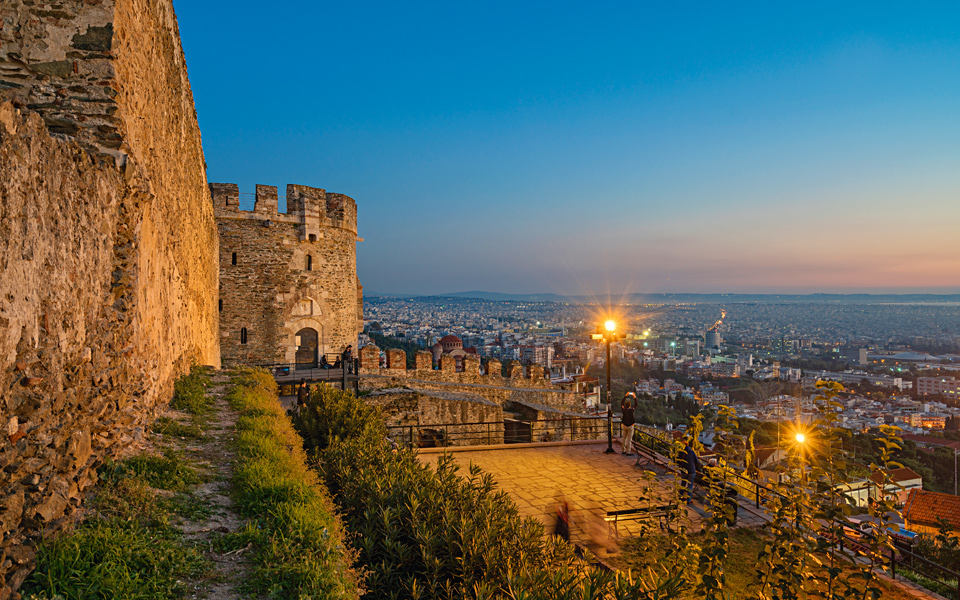Up in the old town, at the Alaca Imaret, an art exhibition is opening. Eight lengths of fabric richly reflecting the hues and imagery of the mosque flow like curtains beneath its soaring dome, inscribed in the languages of the old neighborhoods – Pontic Greek, Ladino, Turkish, Armenian… The installation movingly references the diaphanous layers of history outside. We weave freely in and out of the work, listening to the polyglot recording composed for the event, immersing ourselves in the rich history of the past. But right outside, it’s very much the present – under the golden streetlights, children playing on the Imaret’s porch and screeching as they chase one another through the hedges. We’re the interlopers here – the 15th century mosque is the secret garden behind their apartment buildings; this is just another moonlit night in the mosque’s six centuries, brimming with life.
Alaca Imaret, Koule Kafe, Sheikh Sou, Kipos tou Pasha, Yenti Koule, Geni Hammam, Tourbes Musa Baba… each exotic-sounding name testifies that during the Ottoman period the Ano Poli (Upper Town) district, with its views and fresh breezes, was the Turkish quarter. Today this is the most cohesive, most iconic neighborhood of Thessaloniki – its modern and international face can be found further down the hill. Just as its Byzantine walls guarded the city, Ano Poli guards Thessaloniki’s authentic and timeless self.
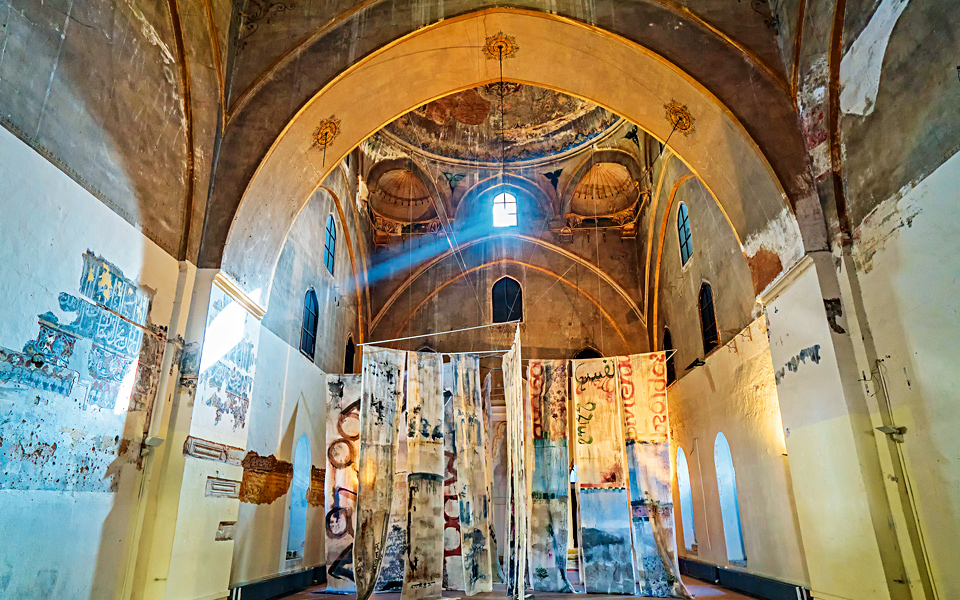
Situated just inside the walls and high above the main town, Ano Poli escaped the devastating fire of 1917, and thus remains the same enchanting labyrinth that it has been for centuries. Examples of Ottoman vernacular architecture – charming partially timbered houses with cantilevering upper stories – are beautifully restored, painted in shades of ochre, terracotta and dusty blue. Those in ruins are just as picturesque – overgrown and often covered with elaborate street art. Newer buildings incorporate the same architectural elements and volumes to maintain the character of the historical streetscape. The residents preserve the local character too – some upper-story balconies are equipped with pulleys and rope which the older residents use to lower baskets down to the street for their bread and newspapers.
“ As much as the winding paths and alleys reward unplanned rambling, there are many notable monuments of both the city’s Muslim and Christian heritage. ”
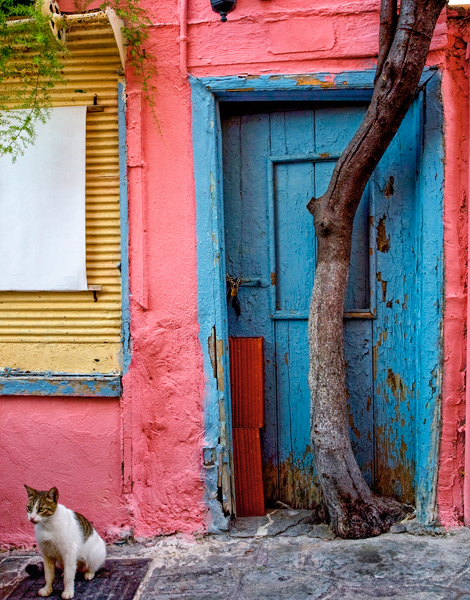
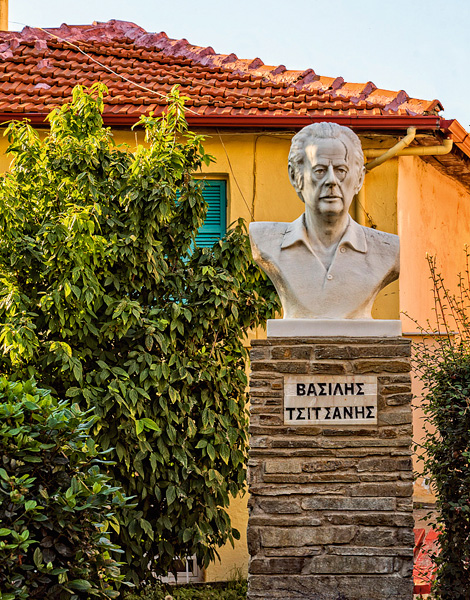
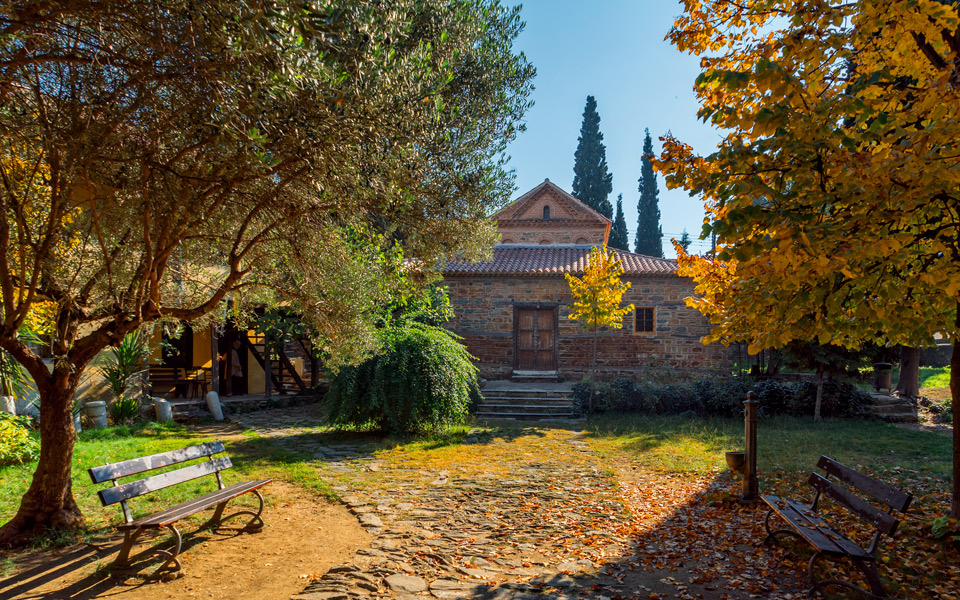
The texture of everyday life remains as true to Ano Poli’s heritage as the architecture. Fleeting trends find no footholds here – this is a neighborhood of retsina and raki, not bespoke cocktails. Your order of yiaourtlou (spiced meat patties with a thick yogurt sauce) will not come on a fancy square plate, and neither will the bougiourdi (a rough fondue of slices of feta and searing hot peppers) or kazan dibi (scorched rice flour pudding) – three of many Turkish dishes that aren’t going anywhere – much of the reason the complex and well-seasoned cuisine of Thessaloniki is so praised. Rebetika – the beloved old music genre of Asia Minor (in its philosophy not dissimilar to blues) played on traditional instruments such as the bouzouki and the baglamas – drifts from open windows. Ano Poli gives a contemporary relevance to its deep cultural roots.
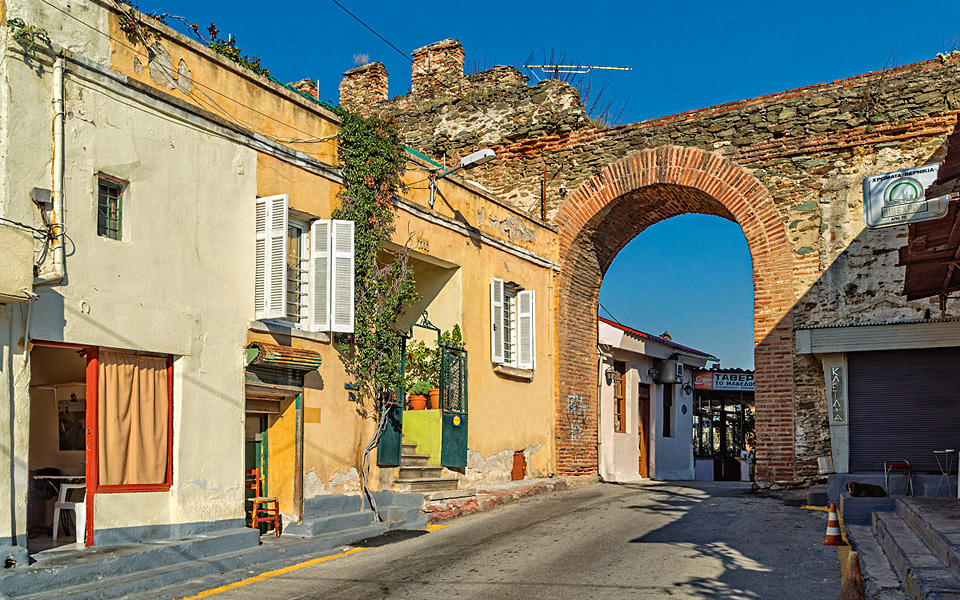
This untamed area of the city, although densely built and with few planned parks, is also its greenest – nature thrives with tenacity in every unplanned corner. The air is rich with the scent of fig trees and jasmine on summer nights; wet leaves and wood smoke in winter. The many paths and stairs are inhospitable to cars (only a few main thoroughfares can accommodate them) so there is no smog, and no noise either – just some crickets by night, birds by day, strains of bouzouki from tavernas and cafes, and lively conversations between upper balconies across the alleyways. (Those looking for more nature can explore the 170k of hiking trails of the Sheikh Sou Forest that borders Ano Poli’s northeastern edge.) Standing tall and majestic above all this are two of Thessaloniki’s defining monuments – lit up dramatically by night, they give the city its characteristic silhouette from below.
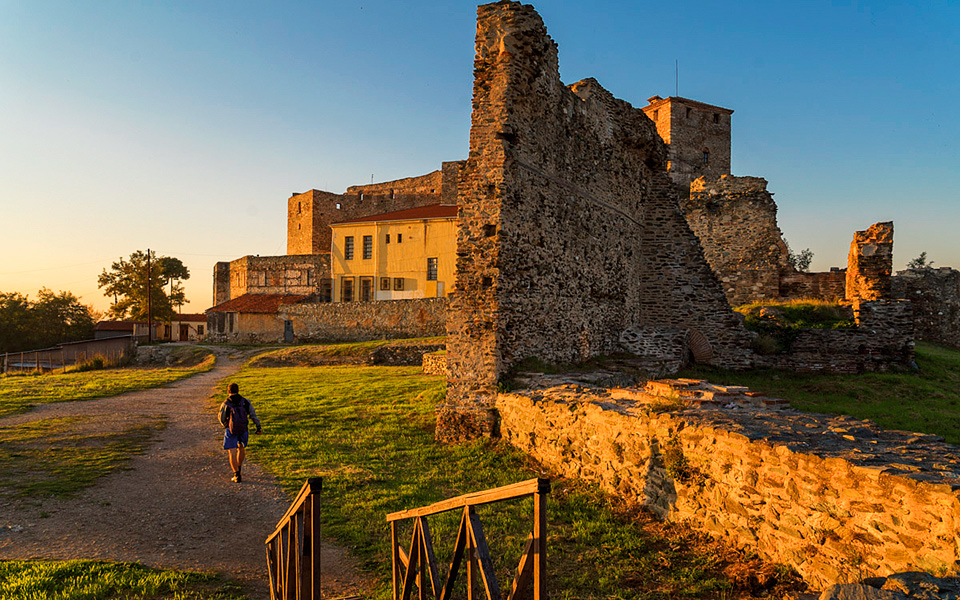
© Perikles Merakos
The Yenti Koule (also called the Eptapyrgio – literally “Seven Tower Fortress”) has crowned the hill since the 15th century. The fortress later became a prison of some reputation – immortalized in many a rebetika song – and was in use until 1989. Just to the east of this, near the beginning of Eptapyrgiou Street, the Byzantine city walls of the north and the east join in a crenellated fairytale of a tower, formerly an artillery emplacement, now the city’s breathtakingly romantic postcard – the Trigonion (added in the 14th/15th century), site of two of the old city gates. Here the entire city stretches out before you, as well as the Thermaic Gulf and snow-capped Mount Olympus. This spot is as popular with locals as with tourists – every evening before sunset, students climb through the not-so-serious fence, bringing with them guitars and retsina to spend the evening in the ruins of the wall, under the stars.

